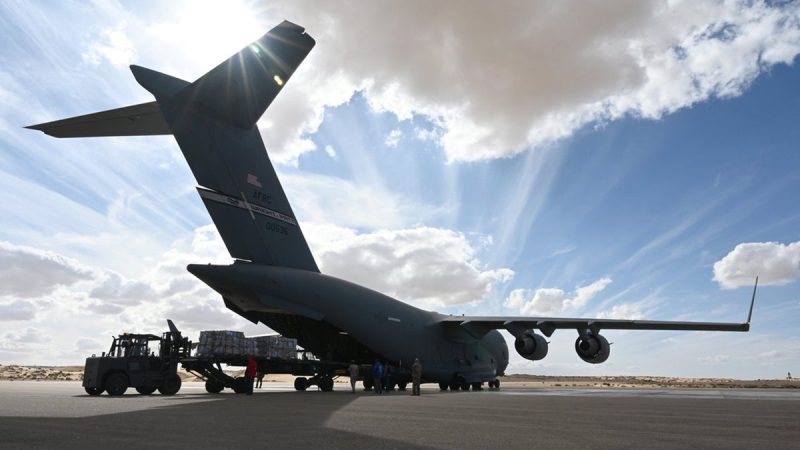The United States military has recently dispatched its first round of humanitarian aid to the war-torn Gaza Strip. The aid was sent through Egypt, which has been a crucial partner in providing relief to the citizens of Gaza.
The humanitarian aid shipment consists of emergency supplies such as food, medical and medical equipment, water filtration systems, generators, and other necessities such as construction materials. The supplies are designed to help both individuals affected by the conflict as well as those who have had to leave their homes.
The shipment is part of the U.S. government’s ongoing commitment to addressing the humanitarian crisis in Gaza. The U.S. has long been a strong supporter of the Palestinian people and their needs, and this shipment is just one step in the larger effort to provide assistance to those in need both inside and outside of the Gaza Strip.
The aid was delivered to the Egyptian port of el-Arish, where it was loaded onto convoy trucks and transported to the Gaza Strip. The shipment was coordinated and overseen by the United States Central Command (CENTCOM) and the United Nations Relief and Works Agency (UNRWA). This cooperation between the United States and the United Nations is another example of the importance of maintaining international partnerships in order to reach common goals.
The shipment was welcomed by the citizens of Gaza, as well as by human rights advocates and the international community. It is being seen as a sign of hope for those living in the Gaza Strip, as the aid will provide much needed relief during this difficult time.
It is also hoped that this humanitarian aid delivery will help to alleviate some of the tension between the Israelis and Palestinians. It is hoped that this gesture of goodwill will lead to further peace talks and negotiations between the two sides.
Ultimately, the delivery of this shipment of aid is a sign of the continued commitment of the United States to providing humanitarian assistance to the most vulnerable of global populations. It is also a sign of hope that international organizations, the United Nations, and the United States can work together in order to bring about lasting peace and security in the region.

